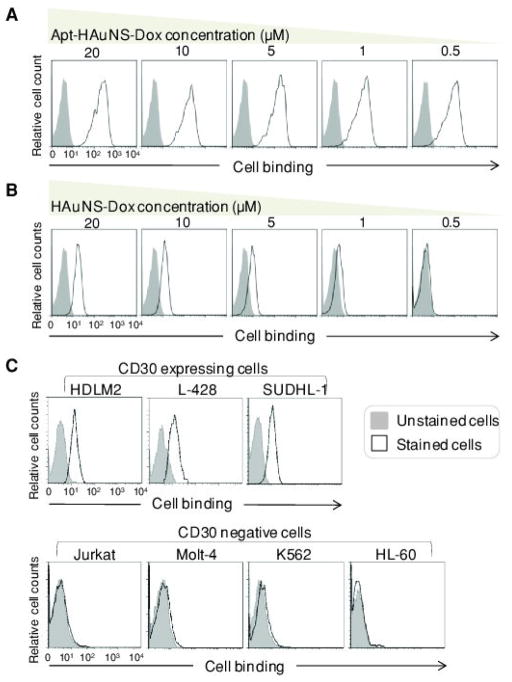Figure 2.
The Apt-HAuNS-Dox specifically bound to lymphoma cells and did not react to off-target cells not expressing the biomarker. (a) Through the aptamer-mediated guidance, the Apt-HAuNS-Dox specifically bound to Karpas 299 lymphoma cells at a concentration as low as 0.5 μM (calculated by the loaded DOX) and cell-binding affinity showed little change when reduced from 20 to 0.5 μM. (b) In contrast, under the same conditions, the non-specific cell binding of the HAuNS-Dox (containing no aptamer) gradually decreased as concentrations reduced. No non-specific cell binding was observed at a concentration ≤0.5 μM, which was used throughout the study. (c) Under the optimal concentration (0.5 μM), in addition to Karpas cells (a), the formed Apt-HAuNS-Dox also specifically bound to HDLM2, L-428, and SUDHL-1 lymphoma cells, but did not react to off-target cells, Jurkat, Molt-4, K562, and HL-60 that did not express CD30-biomarkers.

